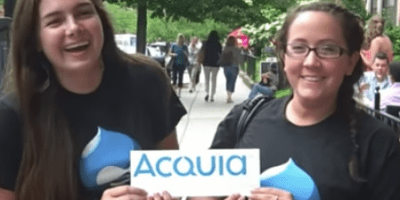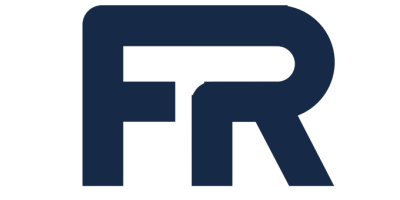The Story Behind Acquia
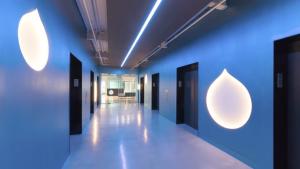
In 2007, Jay Batson and I set out to build an open source, Drupal-based software company that we came to call Acquia. In honor of our fifteenth anniversary, I’m sharing some of the milestones and lessons that have shaped the Acquia we know today. I hope that this record of Acquia’s founding not only pays homage to the incredible colleagues, customers, and partners who have made this journey worthwhile but also offers honest insight into the challenges and rewards of building a company from the ground up.
Jay wrote a similar post in 2017, during our 10-year anniversary. You can read it here to learn about our founding from his perspective and to gain a 360° view of what it’s really like to start a business from scratch.
Red Hat — but for Drupal
Hans Snijder and I developed the very first iteration of Drupal in 2000, when we were both undergraduate students, but by 2007, I was at the University of Ghent working on my PhD dissertation. Drupal was gaining momentum in the wider world — I’ll never forget when MTV called seeking support for their new Drupal site. I remember being amazed that a brand like MTV, an institution I’d grown up with, had chosen Drupal for its website. I was determined to make Drupal successful and helped MTV free of charge.
But it became clear that, for Drupal to grow, it needed a company focused on helping large organizations like MTV succeed with the software — a “Red Hat for Drupal,” as it were. I noticed that other open source projects like Linux had benefited from well-capitalized backers like Red Hat and IBM. (Red Hat had, in fact, become synonymous with Linux.) I wanted to start a company like that, but I hadn’t yet figured out how. I wanted to finish my PhD first, though, so given the limited time and resources of a graduate student, Drupal remained a hobby.
At the same time, more than 3,000 miles away, another aspiring founder and open source enthusiast hoped to build a company that could provide services to scale and succeed with open source software. Jay Batson, an entrepreneur in residence at North Bridge Venture Partners, a venture capital firm near Boston, was working with his sponsor Michael Skok to evaluate hundreds of open source software projects. Jay had narrowed his list to two: Drupal and Apache Solr.
Skimming through a WWII Navajo Code Talker Dictionary, Jay had even found a potential name for the company: acquia. Roughly translated, it meant “to spot or locate” and was closest to the ideals of information and content intrinsic to Drupal. (It also didn’t hurt that the letter A would rank first in alphabetical listings.) Coincidentally, the similarity between acquia and aqua was a subtle homage to the Drupal “drop,” which would eventually provide design direction for Acquia’s logo.
Breakfast in Sunnyvale
In March 2007, I flew from Belgium to California to attend Yahoo’s Open Source CMS Summit, where I also helped host DrupalCon Sunnyvale.That’s where Jay introduced himself. He explained that he wanted to build a company that could offer supplementary services and support for open source projects, including Drupal and Apache Solr, at the enterprise level.
I was focused on getting Drupal 5 released, and I wasn’t ready to start a company until I completed my PhD. At first hesitant, I eventually agreed to meet with Jay.
Over a baguette and jelly, I learned that Jay’s ideas and my desire to build a “Red Hat for Drupal” overlapped. I wasn’t convinced that Apache Solr needed to be part of the equation, but I liked that Jay believed in open source. He saw that open source projects were more likely to make a big impact when they were supported by companies with strong commercial backing.
But in many ways, finding a business partner is like dating. You have to get to know each other, build trust, and see if there’s a match. It doesn’t happen overnight, and Jay and I spent the next few months talking about our vision for the business. We took Apache Solr out of the plan, discussed how we could elevate the Drupal community, and how it would all make money.
By June 25, 2007, Jay had filed the paperwork to incorporate Acquia and officially register the company name. We had no formal product to sell, no prospective customers, and no employees, but that summer, North Bridge gave us a convertible note. I had gotten to know Michael myself, and he’d become an influential mentor to me. The initial seed investment from North Bridge was the capital we needed to create a business plan, travel to pitch to other investors, and hire our first employees.
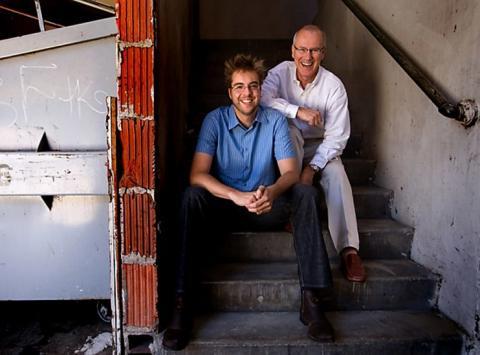
Completing my PhD remained my top priority, so I remained hesitant to commit to Acquia. Eventually, Jay and Michael convinced me I could finish my PhD while also helping Acquia grow. The goals didn’t have to occur sequentially.
Acquia, my Drupal startup
Soon after, with Michael leading the investment, North Bridge gave Acquia a Series A term sheet. Along with North Bridge, Sigma Partners and Tim O’Reilly’s OATV became co-investors. (Tim had become both a friend and advisor to me.)
In many ways, we were an unusual startup. When we received the Series A funding, we had no product, though we knew it would likely be support for Drupal and evolve into the Acquia equivalent of the Red Hat network. Neither existed at the time, however — we were raising money based purely on a PowerPoint deck. North Bridge, Sigma, and OATV mostly invested in Jay and me and the belief that Acquia could be a billion-dollar company that would disrupt the web content management market. I’m incredibly thankful for the huge bet they made on me.
Series A funding was an incredible vote of confidence in Drupal, but it was also a milestone — we had raised $7 million, a not-insignificant amount — that came with mixed emotions. Although I was excited, it was also a big step into the unknown. I knew that Acquia would be good for Drupal and open source, but I also understood the impact it would have on my life. In the end, I felt comfortable making the jump because I had strong mentors who could help translate my vision for Drupal into a business plan. Jay and Michael’s background as entrepreneurs and business-builders complemented my technical abilities and allowed me to fine-tune my own entrepreneurial skills.
In November 2007, we officially debuted Acquia to the world. We weren’t ready, but a reporter had caught wind of our stealth startup, forcing us to unveil the company to the Drupal community with just 24-hours notice. We scrambled and worked through the night on the announcement. Reactions were mixed but generally very supported. In the blog post that served as the announcement, I shared my hopes for Acquia:
- The company would help me provide leadership to the Drupal community and achieve my vision for the software.
- Acquia would be to Drupal what Ubuntu and Red Hat were to Linux.
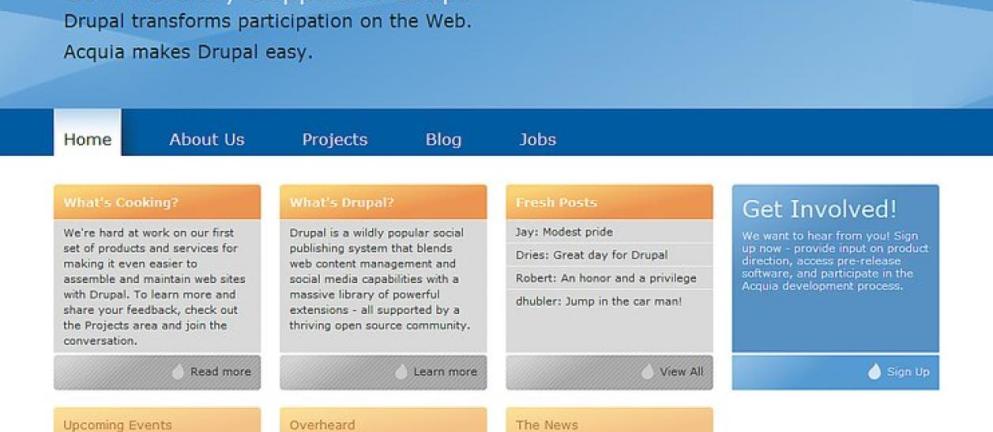
The importance of enduring values
We determined our corporate values at an off-site in late 2007. I’m proud to say that we’ve held true to those values scribbled onto a white board 15 years ago. The leading tenant of our mission? To build a company that would “empower everyone to rapidly assemble killer websites.
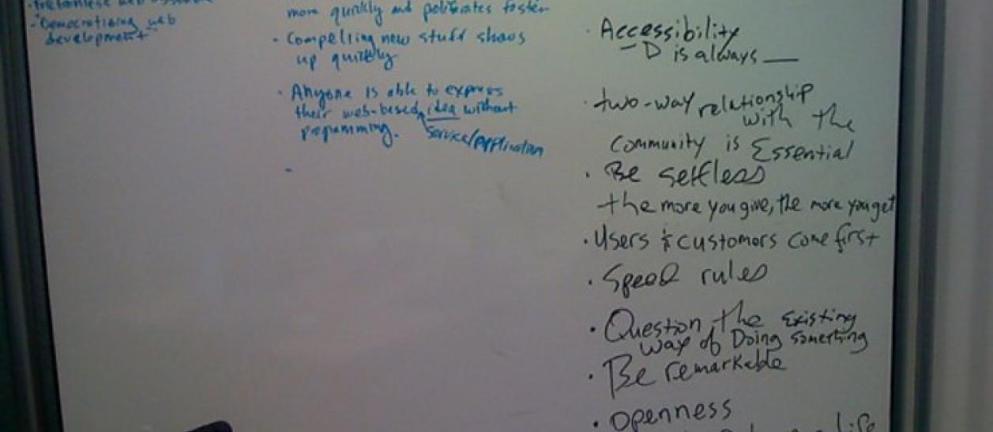
By January 2008, we had six people on staff:
- Gábor Hojtsy, principal engineer and Drupal 6 branch maintainer
- Kieran Lal, product manager and key Drupal contributor
- Barry Jaspan, principal engineer and Drupal core developer
- Jeff Whatcott, vice president of marketing
Because I was still living in Belgium at the time, many of our meetings took place screen to screen — way before Zoom!
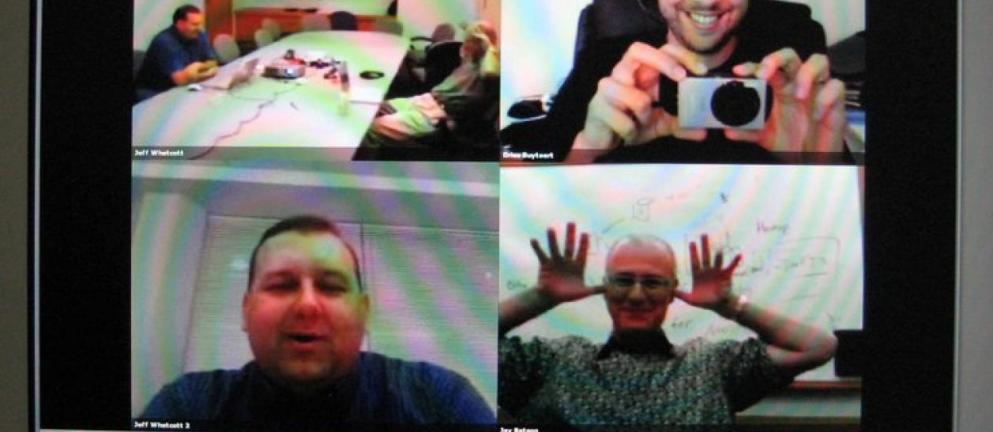
Acquia opens for business
We spent a majority of 2008 building our first products. Finally, in September, we opened for business, publicly announcing the commercial availability of the Acquia Network and Acquia Drupal distribution. The former offered subscription-based access to commercial support all modules in Acquia Drupal, our free distribution of Drupal. By prioritizing enterprise support, our product launch closely mirrored the Red Hat business model.
To truly embrace Drupal, we quickly learned that customers would need support for far more than just Acquia Drupal. So, in the first week of January 2009, we relaunched our support offering. We would now support all projects related to Drupal 6, including all modules and themes available on drupal.org, as well as custom code.
The moment marked our first major turning point, because supporting “everything Drupal” was a big shift. Selling support for Acquia Drupal exclusively didn’t appeal to customers, but we weren’t sure we could financially support every Drupal module. That’s startup life, though. You have to be open to changing your plans and to failing fast. It was a scary transition, but we knew it was the right thing to do.
Building a new business model for open source
We had generated a respectable pipeline for Acquia Network subscriptions but weren’t addressing Drupal’s biggest challenge to adoption: usability and scalability.
So, in October 2008, the team gathered for a strategic offsite, which Tom Erickson on our board of directors facilitated. Red Hat’s operational model, which had primarily offered support, had laid the foundation for how companies could monetize open source, but we were convinced that emerging cloud technology offered a bigger opportunity while also helping us address Drupal’s adoption challenges. We walked out of that seminal offsite with the decision to build Acquia Gardens and Acquia Fields. Here’s why both products were so important:
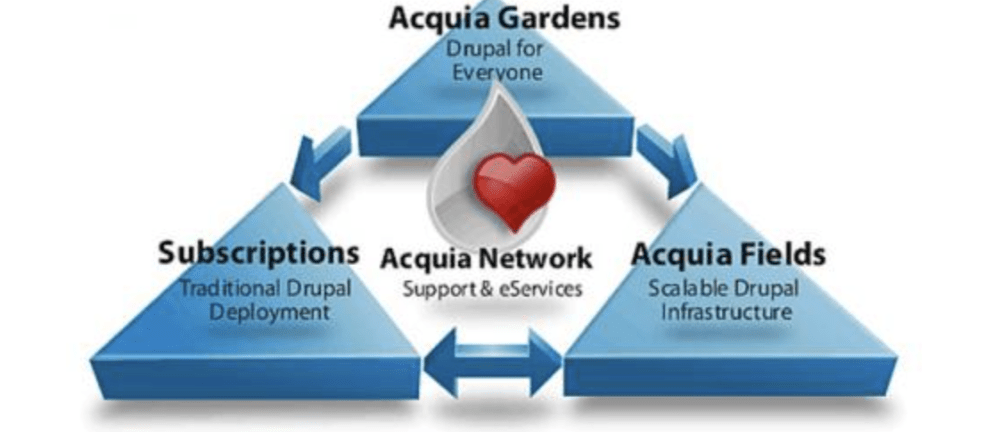
The change solved the scalability issue. Drupal scaled well, but the infrastructure that companies needed to make that happen was expensive and hard to find. We thought the best way to help enterprise scale was to shift the paradigm for web hosting. Instead of traditional rack models, we could take realize the promise of then-new cloud technology.
Acquia Gardens and Acquia Fields also solved the usability problem. In 2008, WordPress and Ning made it really easy for users to start blogging or to set up a social network. Drupal didn’t encourage this same level of adoption for non-technical audiences. Acquia Gardens would offer an easy on-ramp for users, helping them realize the power of Drupal without worrying about installation, hosting, or upgrading. It was one of the only times we had an operational model that offered “Drupal as a service.”
Since then, Acquia Fields has gone through a couple of rebranding instances, first as Acquia Hosting and, now, as Acquia Cloud. Acquia Gardens became Drupal Gardens, later evolving to Acquia Cloud Site Factory.
Back then, a product roadmap that moved Drupal into the cloud was a bold undertaking. Today, the cloud is the starting point for any modern digital architecture. By adopting the cloud into our product offering, Acquia helped establish a new business model for commercializing open source. Now, I can’t think of many open source companies that don’t have a cloud offering.
Moving from Europe to the United States
In 2010, after spending my entire life in Antwerp, I decided to move to Boston, which would allow me to be closer to the team. Most of the company was in Massachusetts, and at the pace we were growing, it was getting harder to help execute our vision all the way from Belgium.
I also hoped to cut my travel time. In 2009, I flew 100,000 in just one year. Little did I know that, just six years later, I’d fly 250,000!
My experience is a common one among entrepreneurs. Initially, I planned to stay on the East Coast for two years. Moving 3,500 miles away from your hometown, most of your relatives, and many of your best friends isn’t an easy choice. Relocating to Boston felt essential, though. I thought it would increase our chances at success, and it had a big impact on my life.
Building the universal platform for the world’s greatest digital experiences
When 2010 began, I remember feeling that Acquia was really three startups in one: our support business Acquia Network, which was very similar to Red Hat’s business model, and our managed cloud-hosting business (Acquia Cloud) and Drupal Gardens (a WordPress.com based on Drupal). Tom had moved into the role of CEO, and me being in Boston allowed me to work with him directly. It was during this transformational time that I believe we truly left our “founding period” and began shaping the company I know today.
The years since then have been exciting and full of growth. We delivered the first ever open marketing cloud, which features a customer data platform and marketing automation and campaign management. Acquia CDP is certified by the RealCDP Institute and is the most widely used CDP in retail.
With Marketing Cloud, Acquia also expanded into the digital experience platform (DXP). For the last three years, Acquia DXP has been recognized as a leader in the Gartner Magic Quadrant for DXP.
Last year, we grew a bit more with our acquisition of Widen, a cloud-native maker of digital asset management (DAM) and product information management (PIM) software. Now named Acquia DAM, the product is turning heads, with The Forrester Wave™: Digital Asset Management for Customer Experience, Q1 2022 Report calling it out as a leader in the field. Acquia DAM was also a finalist for the 2022 SIIA CODiE Award in the Best DAM Solution category.
Expansion has also caused the company to stretch in other ways. Our workplace culture has been repeatedly recognized by various outlets — 2021 Boston Best Places to Work (Built In), 2021 Best Workplaces in Tech (Great Place to Work Institute UK), 2020 Top Place to Work in Massachusetts (Boston Globe). The accolades demonstrate the mutual appreciation between staff and company.
We also have fantastic customers and partners. We serve 25% of the Fortune 100, and our partners include some of the most creative and ambitious agencies and systems integrators in the business — Wunderman Thompson, Bounteous, Phase2, Coherence, Genero, Srijan, FFW, and Accenture, to name just a few.
The decisions we made early in Acquia’s history have proven correct. The world has unabashedly embraced open technology and the cloud, and our long-time commitment to the combination put us at the right place at the right time.
With those years behind us and the lessons they imprinted on us, there are still many goals we hope to realize. I have every confidence that we’ll continue strengthening the ambitious foundation we created.
A big thank you
Of course, none of these results and milestones would have been possible without the hard work of the Acquia team, our customers, partners, the Drupal community, and our many friends. Thank you for all your hard work. After 15 years, I continue to love the work I do at Acquia each day — that’s because of you.


